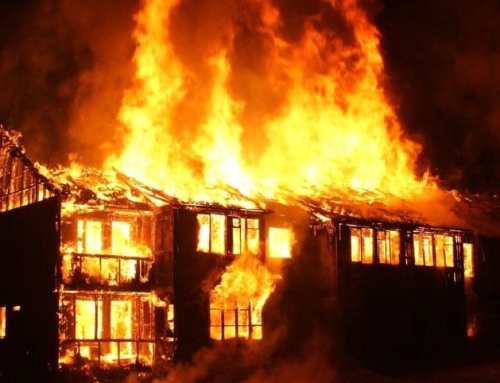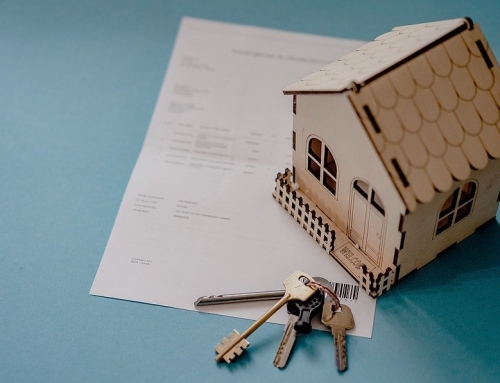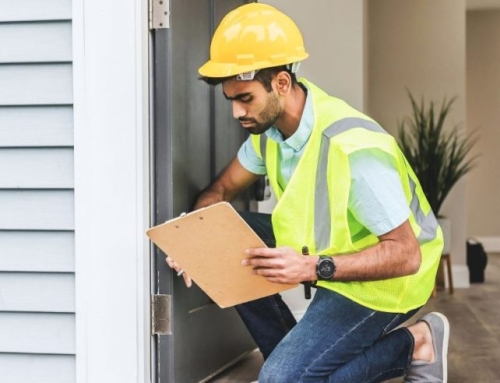How To Tell the Very Best Story About Your House for Sale
It’s all about the story.
That’s what they all tell you in marketing, that people need to understand the story and imagine themselves in it to connect and motivate them the most.
But when preparing your home for sale, it’s tempting to jump straight into sprucing it up and getting it on the market right away. But first it’s best to know what you’re going to highlight – and what you need to do to present it in its best form.
The story you tell is not just about the house itself and its improvements but also the neighborhood, the schools, the area amenities. That gives buyers a narrative that they might see themselves in and answers questions before they arise. It also gives buyers great confidence that you have been a superlative steward of the property.
The better shape your house is in, the better the amenities of the area, and the better you present these wonderful things, the easier and faster it will be to move your house for sale.
This article will show you how to find and fix issues and also how to prepare that information to make it both easily digestible for prospects and demonstrate how complete and competent steward you have been for the property. It will enhance sales prospects and create confidence that it’s a problem-free house.
How to write the perfect property description
Before putting the house up for sale
Inspect the house to identify and address issues and features
Hire a professional inspector to go through the house and detail any issues that might pop up an derail a seller from moving forward. This will cost several hundred dollars and potentially save headaches and delays later on, when timing is critical.
Hire an inspector who will come back and bless any improvements or repairs you make before the final listing. That identifies issues that might scare off buyers and allows you to either address them in advance or disclose them transparently, which builds trust with prospective buyers.
Doing so also gives you a cheat sheet on what repairs or improvements are necessary or valuable, and what might be deal-breakers. If you have a roof leak or an electrical issue, you want to figure out how to handle that before it leaps out in the middle of negotiations. You’re going to have to list all the issues with the house in the required seller’s property disclosure report anyway, and doing this advance work will turn that into a glowing selling feature rather than a bad report card.
Arizona’s Sellers Property Disclosure Statement – what’s in it?
Yes, most buyers with any sense will hire their own inspectors. But wouldn’t it be better to have found and fixed issues before they even know they exist rather than having them show up – late in the process – on their inspector’s report? If they appear at the last minute, without out being either noted or repaired it could:
1) make buyers suspicious of how you have kept up the house,
2) cause delays at critical junctures,
3) give buyers yet another opportunity to negotiate price, or
4) kill the deal.
After the inspection
The report will tell you what you absolutely must fix, like mold. It also should tell you if you have a major issue that must be addressed or disclosed, like a roof or foundation problem. Most of the inspections I’ve seen are smaller headaches but ones that still can add costs for you or create negative impressions for buyers.
Then you have to decide whether to improve or disclose. Fixing every little issue noted (and some are small, like a hairline crack in a wall) can get expensive and time-consuming. Take your list of issues and break them down into three categories:
1) Repair or replace – if you fix it, it won’t be an issue and might even be a selling point.
2) Disclose – If you know something is wrong but you’re not going to fix it, you must let the seller know it exists if it might be considered material to the buyers’ decision.
3) Compensate – Sometimes it just doesn’t make sense to spend a lot of money on a repair that might not be the buyers’ style. For example, if you have ratty carpet, it might not be a good idea to put in better carpet as the buyer might prefer a different color or something like vinyl plank flooring. So, you note the ratty carpet and include an amount you will give the buyer to compensate for that repair. (This actually can be a net plus and an incentive for the buyers as they get exactly what the want.)
Once you’ve decided what you’re going to improve and what you’re not, get started making the repairs before listing the house. Be sure to keep all the receipts for work done, and record the date and costs.
Note: Some things you can fix yourself or do with a handyman well enough that it won’t show up in the buyer’s inspection report. If it’s major, though, like a new water heater or roofing issues, some buyer’s want a licensed contractor doing the work so there is some fallback if it fails. Anything that requires a city code inspection and approval should be done through the proper channels or huge headaches could arise at the worst possible moment.
Telling the story to buyers
You will create a one-page marketing sheet for buyers and their agents showing (with photos) the property and detailing its features.
Make a checklist of the home’s key features and systems: the roof, HVAC, plumbing, foundation, windows, appliances, outside systems (like sprinklers) and features, electronics or Smart features, energy efficiencies.
Include repairs, upgrades, or additions you’ve made, like a newer water heater or Low-e windows. Include any transferable warranties and the date of an addition, like the refrigerator.
Examples of creative real estate listing descriptions — and how to write them
Here’s a sample:
Address
Year
Size and layout (for example, 4 bedrooms, split floor plan, 3 full baths, 2 ½ car garage with added storage
Lot – 10,000 square foot lage lot with mature trees, including citrus, programed sprinkler system, pool, firepit, RV gates
Energy efficiency: STAR appliances, extra roof insulation, Low-e windows, programmable HVAC, on-demand water heater.
Upgrades
- Remodeled master bath (2001), $12,000
- New Samsung refrigerator 2024 (warranty transferrable), $1,100
- Quartz kitchen counters (installed 2022), $7,000
- Garage storage (2018), $1,500
- New paint inside and out, 2024, $9,000
- Water-efficient sprinkler system replaced entirely (2024), $5,000.
How’s the Neighborhood?
You know the old saw: Location, location, location. For most buyers, what’s around the house is as important as the house itself. So collect the information about what makes your area a great place to live.
Include:
Schools: Even if you don’t have kids, this is huge. Good schools nearby make it much easier to sell the house, and the same goes for buyers. I had a rental house in one of Arizona’s best school districts, and all I had to do to lease it out was put a sign in the front yard. And strangers have asked it I’d consider selling it. If the school district is great, highlight it, including awards and standout programs. If it’s not, mention it.
Parks and Recreation: Include regional and neighborhood parks, hiking trails, pools and sport courts, city or community programs like sports teams and arty offerings. If there are things like Spring Training facilities, golf courses, local fishing lakes or other unique features like an Uptown Jungle, say so.
Businesses: A newspaper article a few years ago noted that homes near a Trader Joe’s sell faster and for more. List the highly regarded ones around the house, including Costco, Sam’s Club, Sprouts, Whole Foods, REI, Barnes and Noble, Home Depot, Walmart SuperCenter.
Food and grog: If you have a favorite coffee shop, sushi joint, popular restaurants, a classic family-run Mexican restaurant – whatever’s popular. Your prospective buyers are unlikely to know this as well as the current owners. If there are nightlife and entertainment areas or venues nearby, note them.
Community Events: If your neighborhood hosts farmers markets, block parties, or holiday festivals, include these details to show a sense of community.
Transportation and distances: How far is the home from the freeway(s), the airport, downtown, public transportation, sports arenas, major attractions (in Arizona, that could be Spring Training, a great hiking trail).
Health and medical: Note nearby hospitals, particularly with emergency rooms, urgent care, and emergency veterinarian services.
Some local features you might not want to highlight but are worth noting to show you’re on the up and up and the buyers will appreciate the help if they want to research it, like crime rates and school evaluations. This is best done by giving them links to third-party sites that are likely to be disinterested in your sale.
How to write the intro
The facts you present will give prospective buyers the key information. But you really want to focus their minds and emotions on the key high-value features of your home. So encapsulate those great elements above into a quick narrative.
Many non-writers are intimidated by this task. The best way to get is to just explain it to a friend as conversationally as possible. Don’t try to be Hemmingway or copy the style of real estate agents in MLS listings. They tend to oversell, pepper the description with glowing modifiers and wind up coming off as hucksters. Again, just tell the story like you would to a friend, including your personal perspective and history.
Here’s a sample using the information above:
“Our family bought this house new X years ago, and it has been a comfortable, convenient, and memorable family home since then. We’ve added a pool, lots of storage, and several energy efficient features that have kept our power bills as low as possible. It has multiple new appliances, also energy efficient, plus we upgraded the kitchen, bathrooms, windows, and cosmetics like interior and exterior paint.
You may want to alter things to fit your style, but for the most part, it’s as move-in ready as a brand new house.”
“It’s convenient to good schools, freeways, things to do, great stores and restaurants, and the layout of the streets and pocket parks make it less trafficked, thereby safer and quieter. We’ve loved it during our time here, enjoying coffee with visitors on our front patio or hosting summer barbecues and swim time in the spacious back yard (grill and firepit are included). We expect the next owner will as well.”
When creating this, remember that the mission isn’t to fool buyers but rather letting them see the value you have experienced and loved, and creating a word picture that helps them see themselves doing the same.
Hal DeKeyser
The post How To Tell the Very Best Story About Your House for Sale first appeared on Arizona Realty Network.
Related Posts

Contact Form















